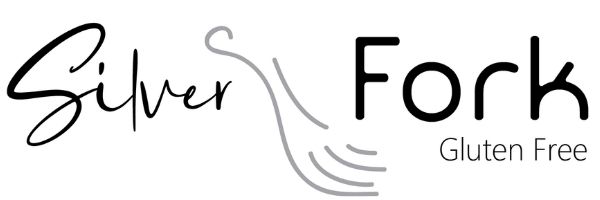Adopting a gluten-free and vegan diet can be a powerful combination for health and wellness. While each dietary choice on its own can be challenging, combining them requires careful planning and knowledge to ensure nutritional adequacy and variety. This guide provides comprehensive tips and strategies to help you thrive on a gluten-free vegan diet.
Understanding Gluten-Free and Vegan Diets
What is a Gluten-Free Diet?
A gluten-free diet excludes all forms of gluten, a protein found in wheat, barley, rye, and their derivatives. Gluten can cause adverse reactions in individuals with celiac disease, non-celiac gluten sensitivity, and wheat allergy.
What is a Vegan Diet?
A vegan diet eliminates all animal products, including meat, dairy, eggs, and honey. It focuses on plant-based foods such as fruits, vegetables, grains, nuts, seeds, and legumes.
Benefits of Combining Both Diets
Combining gluten-free and vegan diets can offer numerous health benefits, including improved digestion, reduced inflammation, and a lower risk of chronic diseases. It also aligns with ethical and environmental values by reducing animal exploitation and environmental impact.
Essential Nutrients and How to Get Them
Protein
Protein is crucial for muscle repair, immune function, and overall health. Vegan sources of protein include:
- Legumes: Beans, lentils, chickpeas
- Nuts and Seeds: Almonds, chia seeds, hemp seeds
- Grains: Quinoa, amaranth, buckwheat
- Soy Products: Tofu, tempeh, edamame
Iron
Iron is vital for oxygen transport and energy production. Plant-based sources of iron include:
- Dark Leafy Greens: Spinach, kale
- Legumes: Lentils, chickpeas, beans
- Seeds: Pumpkin seeds, sesame seeds
- Fortified Foods: Fortified cereals and grains
Calcium
Calcium is essential for bone health. Non-dairy sources of calcium include:
- Leafy Greens: Collard greens, bok choy
- Fortified Plant Milks: Almond milk, soy milk
- Tofu: Made with calcium sulfate
- Almonds and Tahini
Vitamin B12
Vitamin B12 is crucial for nerve function and blood formation. Vegan sources of B12 include:
- Fortified Foods: Nutritional yeast, plant milks, cereals
- Supplements: B12 supplements are recommended for vegans
Omega-3 Fatty Acids
Omega-3 fatty acids support brain and heart health. Vegan sources include:
- Flaxseeds: Ground flaxseeds or flaxseed oil
- Chia Seeds
- Hemp Seeds
- Walnuts
Planning a Balanced Gluten-Free Vegan Diet
Breakfast Ideas
- Smoothies: Blend fruits, spinach, flaxseeds, and fortified plant milk.
- Gluten-Free Oats: Make overnight oats with chia seeds, fruits, and almond milk.
- Tofu Scramble: Sauté tofu with vegetables and nutritional yeast.
Lunch Ideas
- Quinoa Salad: Combine quinoa with chickpeas, cucumbers, tomatoes, and a lemon-tahini dressing.
- Lentil Soup: A hearty lentil and vegetable soup with gluten-free bread.
- Stuffed Peppers: Bell peppers stuffed with rice, beans, corn, and spices.
Dinner Ideas
- Stir-Fried Vegetables: Serve with tofu and gluten-free tamari sauce over brown rice.
- Zucchini Noodles: Top with a creamy avocado sauce and cherry tomatoes.
- Bean Chili: A rich chili with black beans, kidney beans, tomatoes, and spices.
Snack Ideas
- Hummus and Veggies: Carrot sticks, celery, and cucumber with hummus.
- Fruit and Nut Bars: Homemade bars with dates, nuts, and seeds.
- Rice Cakes: Topped with almond butter and banana slices.
Overcoming Common Challenges
Finding Gluten-Free and Vegan Products
- Read Labels Carefully: Ensure products are certified gluten-free and vegan.
- Shop at Health Food Stores: These stores often have a wider selection of gluten-free and vegan products.
- Online Shopping: Many specialty products are available online.
Eating Out
- Research Restaurants: Look for restaurants with gluten-free and vegan options.
- Communicate with Staff: Explain your dietary needs to ensure safe and suitable meals.
- Carry Snacks: Bring snacks in case options are limited.
Social Situations
- Bring Your Own Dish: Ensure there’s something you can eat at gatherings.
- Educate Friends and Family: Help them understand your dietary choices and needs.
- Plan Ahead: Contact hosts in advance to discuss meal options.
Summary
A gluten-free vegan diet can be a fulfilling and healthful way to eat, but it requires careful planning and attention to nutritional needs. By incorporating a variety of nutrient-dense foods and following the tips provided, you can enjoy a balanced, satisfying diet that supports your health and ethical values. Embrace the journey and explore the wide array of delicious, wholesome foods available to you.




